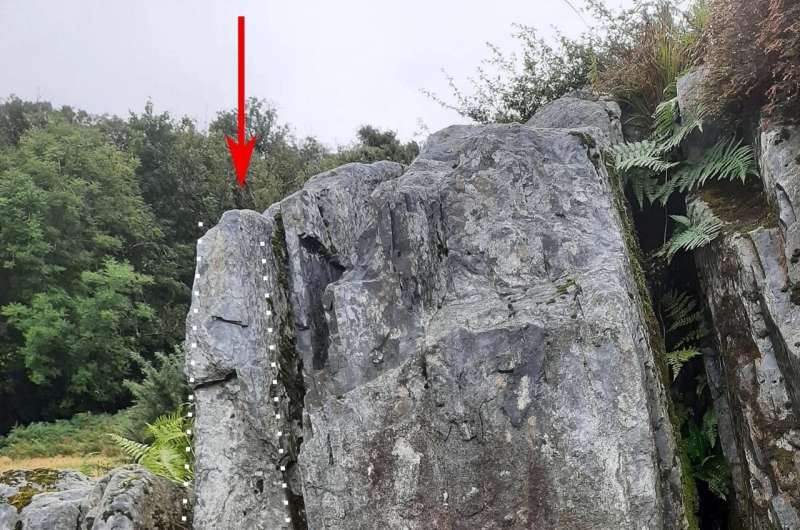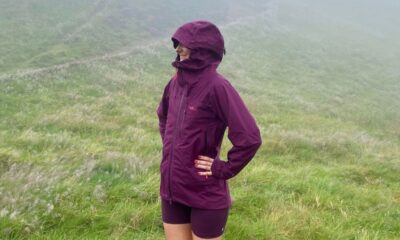Science
New Research Reveals Humans, Not Glaciers, Moved Stonehenge Bluestones

New research led by Aberystwyth University has provided compelling evidence that the famous bluestones of Stonehenge were transported by Neolithic humans rather than glacial activity. The study focused on the Newall boulder, a significant fragment excavated from the site in 1924, and its origin is traced back to Craig Rhos-y-Felin in Wales, located over 200 kilometers away.
Stonehenge, a UNESCO World Heritage site, continues to captivate visitors worldwide not only for its towering sarsens but also for its smaller, blue-hued bluestones. These megaliths have long been a point of contention among archaeologists regarding their means of transportation. While some researchers have argued that glacial ice may have carried the stones to Salisbury Plain, the new findings put forth a strong case for deliberate human movement.
In their publication titled “The enigmatic ‘Newall boulder’ excavated at Stonehenge in 1924: New data and correcting the record,” researchers employed mineralogical, petrographic, and geochemical analyses to determine the boulder’s transport history. Measuring 22 × 15 × 10 cm, the Newall boulder was excavated by Lt-Col Hawley and subsequently retained by R.S. Newall, who collected 18 stones from the site. Previous sampling efforts in the 1970s and 1980s provided a foundation for the new analyses.
The research team discovered that the Newall boulder is composed of Rhyolite Group C, matching the geological profile from Craig Rhos-y-Felin. Geochemical testing further confirmed these correlations. Notably, the boulder’s distinctive bullet-shaped profile aligns with the tops of natural rhyolite pillars at its source, as well as the size and shape of the buried Stone 32d at Stonehenge.
Field investigations conducted across Salisbury Plain have yielded no evidence of glacial deposits or erratics—rocks displaced by glaciers. This absence of glacial materials, particularly within 4 kilometers of Stonehenge, challenges the theory that glaciers played a role in transporting the bluestones. Additionally, any angular fragments found near the monument exhibit edge damage indicative of human shaping rather than glacial erosion.
The findings strongly suggest that the Newall boulder originated from Craig Rhos-y-Felin, likely broken off from a larger monolith such as Stone 32d. All gathered mineralogical, geochemical, and field data support the conclusion that Neolithic people were responsible for transporting the bluestones to Stonehenge, effectively discrediting the glacial transport hypothesis.
This research not only clarifies the origins of the Newall boulder but also reinforces the argument that all bluestones at Stonehenge were likely moved by ancient human efforts. The study was published in the Journal of Archaeological Science: Reports and serves as a significant contribution to our understanding of the monumental site.
As interest in Stonehenge continues to grow, findings such as these illuminate the remarkable capabilities of Neolithic societies in the construction and transportation of their monumental architecture. The research was authored by a team including Justin Jackson and was reviewed by Andrew Zinin, ensuring the integrity of the findings.
In a time when scientific exploration is crucial, this study exemplifies the ongoing dedication to uncovering the mysteries of our past and the human ingenuity that shaped it.
-

 Technology5 months ago
Technology5 months agoDiscover the Top 10 Calorie Counting Apps of 2025
-

 Technology3 weeks ago
Technology3 weeks agoOpenAI to Implement Age Verification for ChatGPT by December 2025
-

 Health3 months ago
Health3 months agoBella Hadid Shares Health Update After Treatment for Lyme Disease
-

 Health3 months ago
Health3 months agoAnalysts Project Stronger Growth for Apple’s iPhone 17 Lineup
-

 Health4 months ago
Health4 months agoErin Bates Shares Recovery Update Following Sepsis Complications
-

 Technology5 months ago
Technology5 months agoDiscover How to Reverse Image Search Using ChatGPT Effortlessly
-

 Technology3 months ago
Technology3 months agoElectric Moto Influencer Surronster Arrested in Tijuana
-

 Technology5 months ago
Technology5 months agoMeta Initiates $60B AI Data Center Expansion, Starting in Ohio
-

 Technology2 months ago
Technology2 months agoDiscover 2025’s Top GPUs for Exceptional 4K Gaming Performance
-

 Technology5 months ago
Technology5 months agoRecovering a Suspended TikTok Account: A Step-by-Step Guide
-

 Health5 months ago
Health5 months agoTested: Rab Firewall Mountain Jacket Survives Harsh Conditions
-

 Lifestyle5 months ago
Lifestyle5 months agoBelton Family Reunites After Daughter Survives Hill Country Floods



















